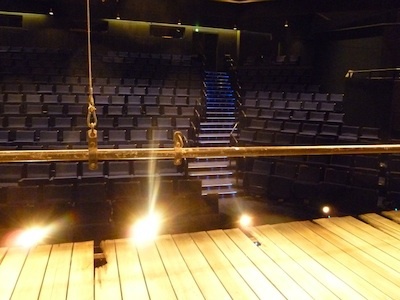Stanley Milgram’s obedience experiments are about to make an appearance in Adelaide. Not in a lab, or in a university, but in the Festival Centre. Inspace development theatre group will unleash their performance of Milgram’s experiment on a no doubt curious audience on Friday November 23.
I’m just sorry I can’t be there.
They’re not the first to use Milgram’s obedience experiments to inspire theatrical performances. British performance artist Rod Dickinson re-enacted the obedience experiment in Glasgow’s Centre for Contemporary Art in February 2002. Dickinson recreated the original experiments using transcripts and built a lab and shock machine identical to Milgram’s.
Dickinson’s dramatisation has since been made available on DVD and inspired a book of essays about the Milgram re-enactment. Dickinson seems to have a fascination with arresting, even gruesome real life events. Among his other works, Dickinson’s recreated the Jonestown Massacre — with himself playing the leader of the cult, Jim Jones, exhorting his followers to take the poison that would see them laid out in rows, dead, 24 hours later.
But back to Adelaide. The show, simply called The Milgram Project, describes itself as ‘pioneering performance’ and is sponsored by both the arts and sciences. It has the support of the Adelaide Festival Centre and Australia’s Royal Institute of Science (RiAus).
Milgram both acknowledged and worried about this blurring of boundaries between performance art and science in his obedience research. In 1961 he confided in his notebook that his work was more effective as theatre than science.
…the drawing power of the experiments stem in part from their artistic, non-scientific component. This makes them more interesting; it does not necessarily make them more valuable for a developing science of man.
Whether or not you share Milgram’s view (and my own) that his experiments are powerful theatre but shaky science, there’s no denying their fascination.
But the risk with dramatic re-enactments of Milgram’s obedience research is that they say nothing new.
Let’s hope this latest performance goes beyond cliche and presents a fresh take on a story that is as misunderstood as it is famous.
Let’s hope for a performance that challenges and provokes the audience to examine how their own role as observers parallels that of Milgram the scientist, watching the drama unfold behind the safety of a one way mirror.


